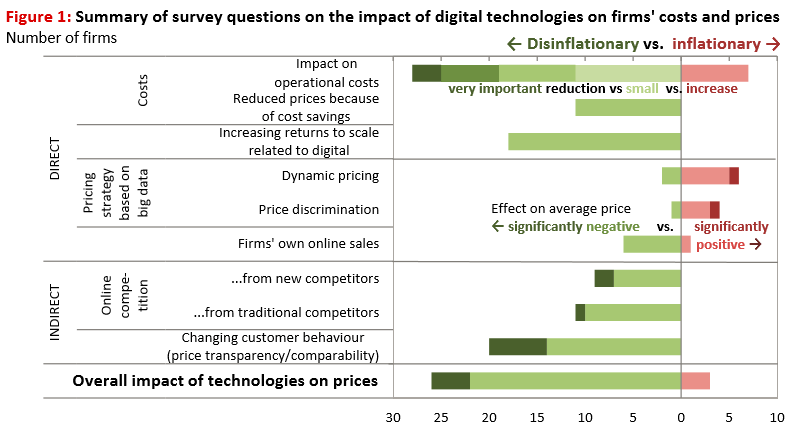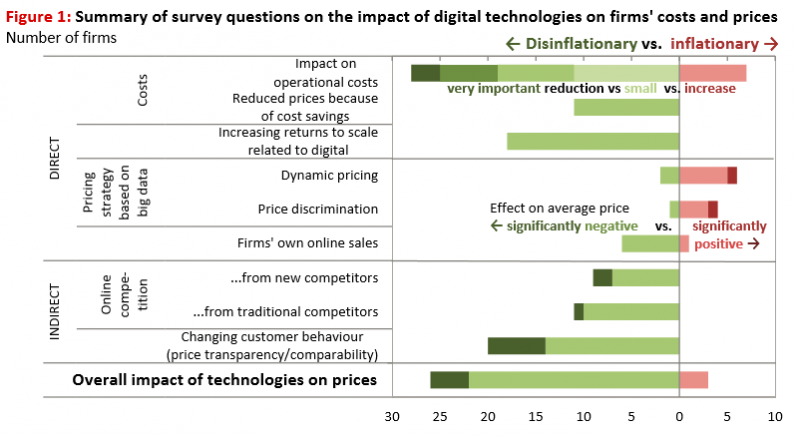Central bankers have been greatly puzzled by low inflation, despite their valiant efforts to stimulate growth by expansionist monetary policy. Initially, bankers referred to the low inflation numbers as “transitory” and “noisy”, implying that patience is needed to reach inflation targets. Slowly, bankers are admitting that weak inflation may not be transitory and that other, unidentified, factors are at play. What might these factors be?
Recent analytical studies by research staff at the Bank of Canada offer insights on the effect of digitalization on consumer prices.[1] Moreover, the conclusions reached bear directly on the use of monetary policy in its struggle with weak inflation.
The Bank surveys reveal disinflationary pressures as firms adapt to the digital world in many ways:

As for the impact on the labor market, the survey found that digitalization does displace some workers. But at the same, it increases the demand for more highly-skilled workers. We often read of labor shortages in specific skill categories, while the overall rate of unemployment remains unchanged. This structural mismatching is becoming all too familiar. Overall, the researchers found that digitalization did not reduce total employment.
What is more interesting to monetary economists is how digitalization impacts central bank policy. The Bank researchers conclude :
While monetary policy will likely look through transitory shocks affecting inflation, lasting effects on the price level may require a reassessment of the supply potential of the economy and accommodation by the monetary authority to maintain the inflation target.











Leave A Comment